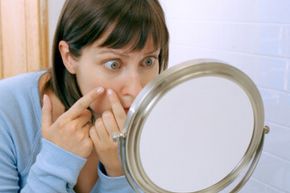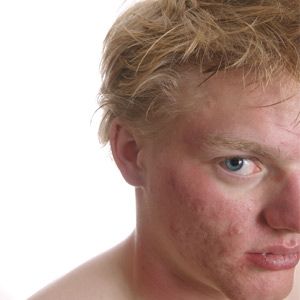If you're like most people, the word "acne" probably reminds you of pimply-faced teenagers struggling through that awkward period of youth. However, that image isn't exactly accurate. More and more people past adolescence now report troubles with the condition. Nearly 20 percent of men and 30 percent of women over the age of 20 have some sort of breakout [source: WebMD]. Adult acne can affect a person in two different ways -- persistent acne, when the acne follows a person from puberty into adulthood, and late-onset acne, when people see acne after years of having unblemished skin [source: AcneNet].
Adult acne has just as many myths associated with as the teenaged variety. Some people think it is caused by eating greasy food or a lack of hygiene. Others wonder about treatment: Should you pop pimples, wash your face 10 times a day or simply let the nuisance run its course? Although the cause of adult acne is not always certain, the results are almost always the same: frustrating blemishes on the skin and -- in severe cases -- permanent scarring.
Advertisement
For more information about daily acne care, read Acne-cleansing Diet: Fast Facts.
Although you may be older and wiser, adult acne can be just as embarrassing and cause as much anxiety as the zit you found the morning of the prom. Moreover, adult skin type is often a combination of dry and oily, which can cause problems when trying to treat acne. And for those who are worried about wrinkles, there seems to be an entirely different dilemma -- should you treat the acne and dry out your skin or use moisturizing anti-wrinkle creams that can clog your pores and make your acne worse?
To find out more about what causes acne in adults, keep reading.
Advertisement

